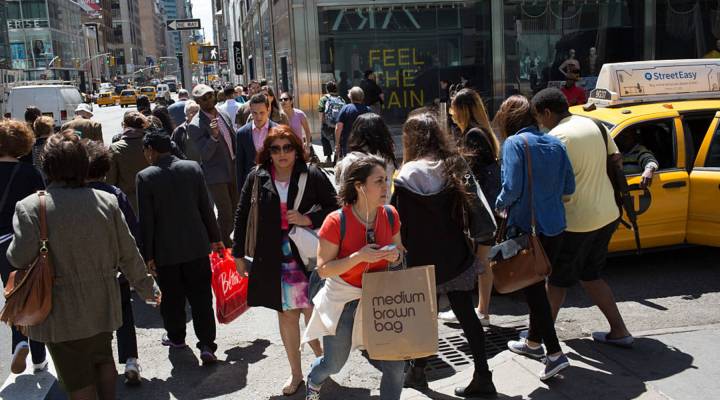
U.S. economic growth slowed to 2.3 percent pace in first quarter
Share Now on:
U.S. economic growth slowed to 2.3 percent pace in first quarter

The U.S. economy slowed to a moderate 2.3 percent annual growth rate in the first quarter as consumer spending turned in the weakest performance in nearly five years.
Still, the January-March increase came in better than expected and was enough to propel growth over the past year to come close to the 3 percent goal set by the Trump administration.
The Commerce Department reported Friday that the gain in the gross domestic product, the economy’s total output of goods and services, followed a 2.9 percent rise in the fourth quarter and gains above 3 percent in the previous two quarters. It was the strongest nine-month stretch in a decade.
Many economists had forecast that growth would slip below 2 percent in the first quarter, reflecting a big pullback by consumers after a torrid pace of spending in the fourth quarter. They expect growth to surpass 3 percent in the current quarter.
Consumer spending, which accounts for 70 percent of economic activity, decelerated sharply from a 4 percent growth rate in the fourth quarter to a 1.1 percent pace in the first quarter. That was offset somewhat by gains in inventory building by businesses and a lower trade deficit.
Analysts viewed the first quarter slowdown as temporary, with consumers expected to boost their spending amid a low unemployment rate and the initial impact of the $1.5 trillion in tax cuts that Congress approved in December.
Over the past four quarters, GDP growth has averaged 2.9 percent, just below the 3 percent projection the administration used in its budget for next year.
While the administration expects the economy to grow at rates of 3 percent for the rest of this decade, private analysts are less optimistic. They say that growth will be bolstered by the tax cuts and increased government spending for this year and next year. But then they expect growth levels to return to the lackluster rates of around 2 percent as the boost from the government stimulus wears off and the economy starts to feel the adverse effects of rising interest rates.
The Federal Reserve is expected to keep raising its key interest rates to prevent unwanted inflation, and big federal budget deficits are likely to push up government borrowing costs.
There’s a lot happening in the world. Through it all, Marketplace is here for you.
You rely on Marketplace to break down the world’s events and tell you how it affects you in a fact-based, approachable way. We rely on your financial support to keep making that possible.
Your donation today powers the independent journalism that you rely on. For just $5/month, you can help sustain Marketplace so we can keep reporting on the things that matter to you.


















